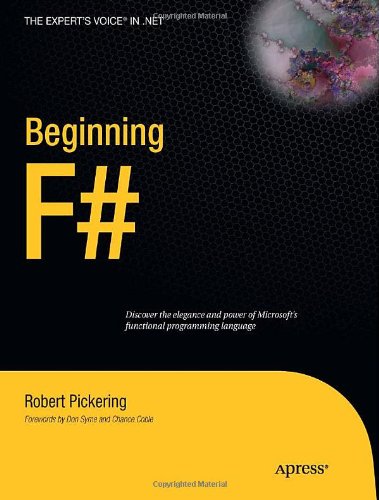Beginning F# book
Par maddux sandra le jeudi, juillet 14 2016, 11:37 - Lien permanent
Beginning F#. Robert Pickering

Beginning.F..pdf
ISBN: 1430223898,9781430223894 | 400 pages | 10 Mb

Beginning F# Robert Pickering
Publisher:
Fortunately lists are simple and straight forward, so let's begin. F# F# G# G# A Listen to yourself! It is sort of a 6 count pattern. In my last article I tried to capture your interest with respect to this, sometimes overlooked language in the visual studio arsenal, F#. Lists represent the backbone of functional programming and in order to be an effective F# programmer you must truly master list processing. Accenting beat one, think “ONE two three One two three” (or FOUR five six). Then play back up to the F# and A. I'll in London on the 10th/11th May giving a two day course entitle “Beginning F# Workshop” in conjunction with the lovely folks at Skills Matter. So get a flow going–D down to A, F#, and finally D. Grab your mandolin and try to play the F#/Gb Major variants slowly at the beginning and then fast! C# B then let's trace the beginning. [Fritz] So, in your new course, Oliver, the Introduction to F#, you divide it up into, it looks about seven or eight modules here. B C# (to point it out) A if this the end. Right from the start * A listen to your friends? C# B (i don't wanna know) A this time use your head. I thought it was cool that in the early chapters the focus with the F# code is to provide examples that you can just get running straight away instead of having to worry about the need to structure your code in a maintainable way. I must admit that you have to learn how to love F#, it's not that often love at first sight, because you just can't figure out what is going on. �If you really want to master the mandolin, practice the F#/Gb Major chord together with scales on the same key. Robert Pickering's Beginning F# Workshop and Progressive.Net.